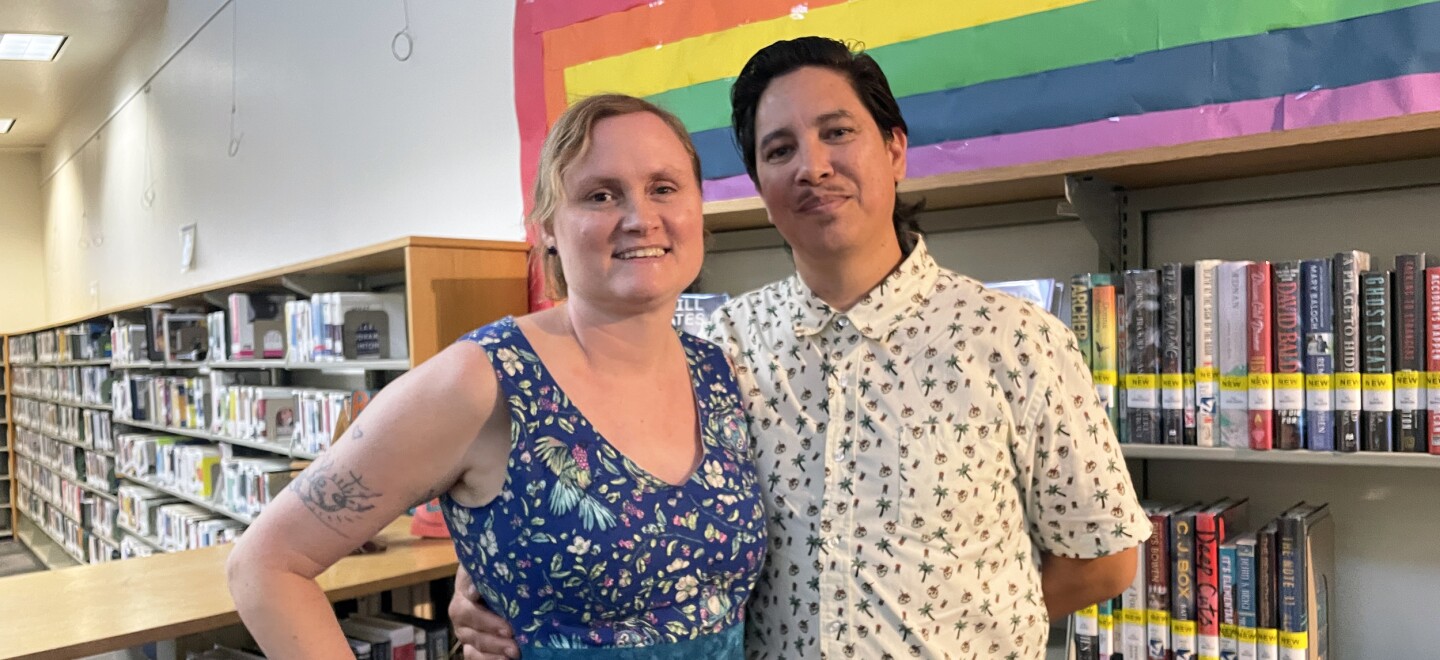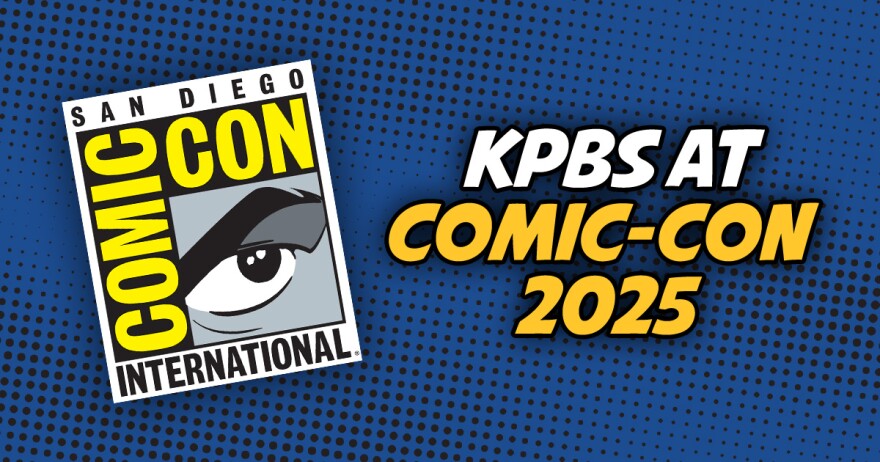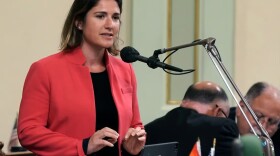A cluster of library patrons lingered in the back corner of the North Park Library, upcycled glass jars in hand. It was late for a Wednesday evening, but the space was bustling.
ToshWerks at San Diego Comic-Con
July 23-27, 2025
Booth Q-16 (Small Press area, Hall B)
"We source bottles, cups, glasses wherever we can, and then, using a specific glass etch — giving people in the community the opportunity to set up their own designs, learn step by step how to do glass etching," said Robert Estigoy.
Robert and Asia Estigoy are teaching artists and founders of the art, design and education studio ToshWerks.
Participants taped a stencil of their choice over their jar, brushed on a paste-like compound known as etching cream to break down the outer layer of the glass — and then waited.
"They rinse it, pull it off, and they're left with a piece that they can take home and show off," he added.
The Estigoys have been working together since the early 2000s. When they started making art, they didn't envision things like this library workshop. They were driven by conventions like San Diego Comic-Con, packing their small booth (and Etsy shop) with handmade original comics, zines, crocheted trinkets and buttons. Over time, their creative work evolved into education, motivated by a kind of "teach a person to fish" mentality.
"If we teach those people how to make the art and the ideas that we've learned or gained from our experience as artists, it spreads further. It's much cooler to do that."Robert Estigoy, ToshWerks
"We can make a bunch of stuff and give it to a handful of people, but if we teach those people how to make the art and the ideas that we've learned or gained from our experience as artists, it spreads further. It's much cooler to do that," Robert said.
A Comic-Con origin story
Robert started going to Comic-Con as a kid — back when, as he tells it, you could just walk right in, no months-in-advance badge lottery necessary.
"My first Comic-Con was 1989," he recalled. "My sister went downtown to pay a parking ticket, and she looked up at the marquee and said, 'Hey, there's comics going on in here. Do you want to go check it out?' And I was like, 'Yeah, sure, I like comics.' And we just walked up. I saw people reading comics and selling comics and trading comics and talking about comics, and I said, 'Where has this been my whole life?'"
Robert grew up buying comics for 50 cents at the now-defunct U-ToteM convenience store near his house, or at the commissary where his father worked at the 32nd St. Naval Base.
"Mostly superhero comics at that time," he said. "Still a big comics fan myself."
Asia's introduction to Comic-Con didn't happen until she met Robert.
"My mom was an art professor at Southwestern College, so an artist family, but Robert probably introduced me to comics," Asia said.
Comics played a big role in their early relationship — Robert constantly brought her comics to read. Asia remembers Jill Thompson's "Scary Godmother" as the first comic book she sought out on her own.
It wasn't long before the next step in their creative, comics-loving, relationship was to become Comic-Con exhibitors.
"2002 was the first year that we're like, 'Hey, we like comics. We make stuff. And it comes with two badges.'"Robert Estigoy, ToshWerks
"2002 was the first year that we're like, 'Hey, we like comics. We make stuff. And it comes with two badges,'" Robert said.
They've had a booth every year since.
"In between (Comic-Cons), we just had this huge explosion of ideas and creativity," Robert said. "Just constantly making stuff and trying new ideas. And it went well. We sold a bunch of stuff."
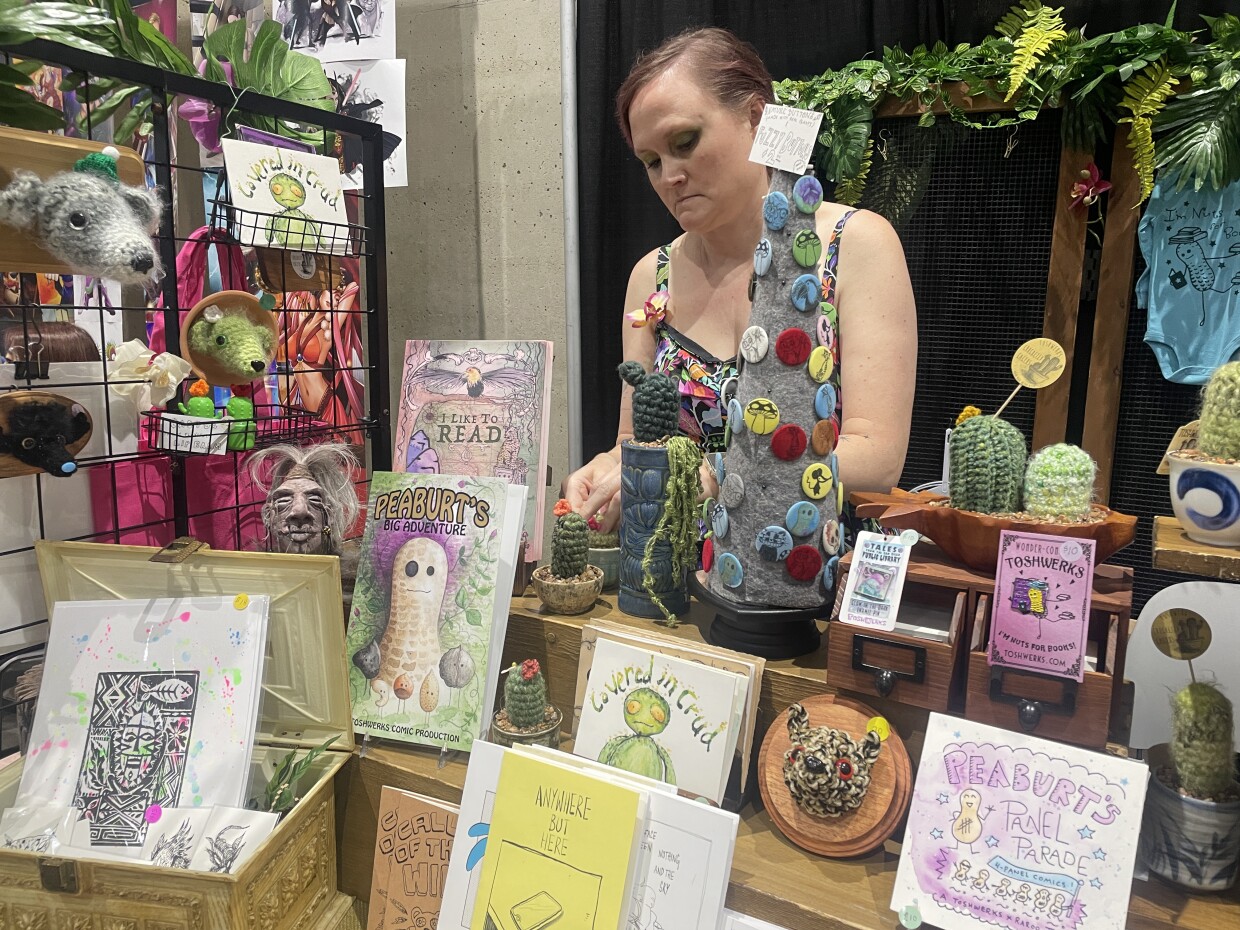
They sold handmade comics (like a series about an anthropomorphic peanut named Peaburt, who goes on adventures) plus creative items like felt-appliqué bags featuring original characters. After those early years, they began traveling for other conventions and eventually WonderCon.
In 2016, ToshWerks was commissioned by the San Diego Public Library to design a commemorative Comic-Con library card. At that point, they had already been working with the library system, but Robert refers to that library card as a "big explosion" in how they were seen by the community. After that, librarians began reaching out, asking if they could bring their work to different neighborhoods.
It was a turning point, pairing community outreach and literacy with their own art and fandom — and finding ways to sustain their work year-round. But as Comic-Con approaches each year, it still takes over their lives — and the Estigoys are not mad about it.
"Our house — every surface is covered with a different project," Asia said. "And we have three kids now, and they are all awesome artists, so they're helping too and making their own things to sell. Everyone gets involved."
Those kids grew up at — and literally underneath — the ToshWerks Comic-Con booth.
"We'd have a suitcase full of shirts under the table, and as babies they would nap inside the suitcase under the table."Asia Estigoy, ToshWerks
"We used to do screenprinted shirts a lot. We'd have a suitcase full of shirts under the table, and as babies they would nap inside the suitcase under the table," she said, laughing.
"Traveling circus babies," Robert added.
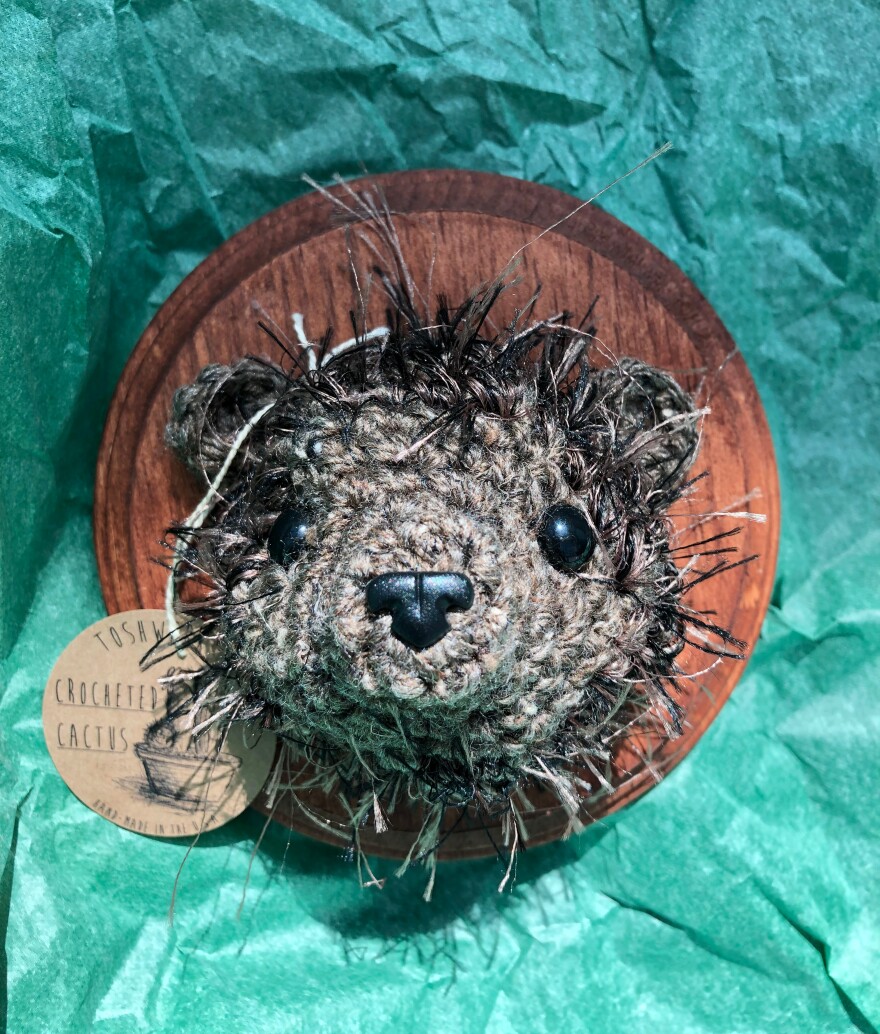
When asked why they keep coming back to Comic-Con, Asia said the booth makes for a great home base.
"My favorite thing is people-watching. I have a place to sit at Comic-Con. I have a chair, and I get to just watch and see all the amazing costumes and all the creativity — and make a little bit of money, and then I can go shopping. We used to go to panels — those are a little tricky these days, but those are fun too, if you can get in," she said.
Over the years, Robert developed a personal Comic-Con checklist to keep the spark alive:
"It's: find an old comic that I've been looking for; find a new comic that I've never seen before; a toy or action figure that's new to me; a Magic: The Gathering card — can be just one based on the artwork or functionality of the card; and then meet one person."
The economics of Comic-Con
Comic-Con is also a way to balance between fandom with business. It’s still a major revenue generator for ToshWerks — and their family. Before they had kids, Asia and Robert would take their Comic-Con earnings and travel the world for a few months before their next convention. Now, they focus more on educational programming. Still, Comic-Con remains key to their budget.
"It is a living. We have to pay the rent. We have to pay our bills here in San Diego. So the convention for a couple years was our biggest source of income. After we had kids it wasn't traveling anymore, it was paying our rent for the next six months," Robert said. "We pay for our booth and then we would be set, and then can, you know, have a little breathing room to be creative."
For the Estigoys, the trick is keeping the process joyful. If making the products for the booth starts to feel like work, the math rarely adds up. But if it stays fun — or becomes something the whole family can do together — then they’re less worried about the bottom line or inclined to think so granularly about accounting.
"I think we both struggle with the monetization of our art as well. I try not to, but I'm constantly thinking: Is this cost effective? Is this worth it?"Robert Estigoy, ToshWerks
"I think we both struggle with the monetization of our art as well. I try not to, but I'm constantly thinking: Is this cost effective? Is this worth it? And she knows," Robert said.
"I spent like two days making three handmade books that we sell for..." Asia began.
"... we sell for 10 bucks or whatever," Robert said.
"Fifteen bucks maybe," Asia added.
"Fifteen bucks hopefully this year," Robert said.
"But they're really awesome," Asia said.

Comic-Con booths are easier to secure for returning vendors, but some years Toshwerks has waited until the last minute for confirmation. One year, they didn't get a booth at all — until the second day of the convention.
That day ended up being one of Robert's favorite Comic-Con memories.
"Comic-Con said, 'Sorry, we don't have a booth for you, but come into the show and walk around.' That was the first year that (Asia) got to be an attendee," he said. "It was just us, and we're walking around and we're looking at stuff, and that was so fun for me, because I had the opportunity to share Comic-Con with her."
Even on the years they feel unsure — when they wonder if it’s time to take a break — the Estigoys keep coming back.
"We're afraid if we do that, then they won't let us back in," Robert said, laughing.

